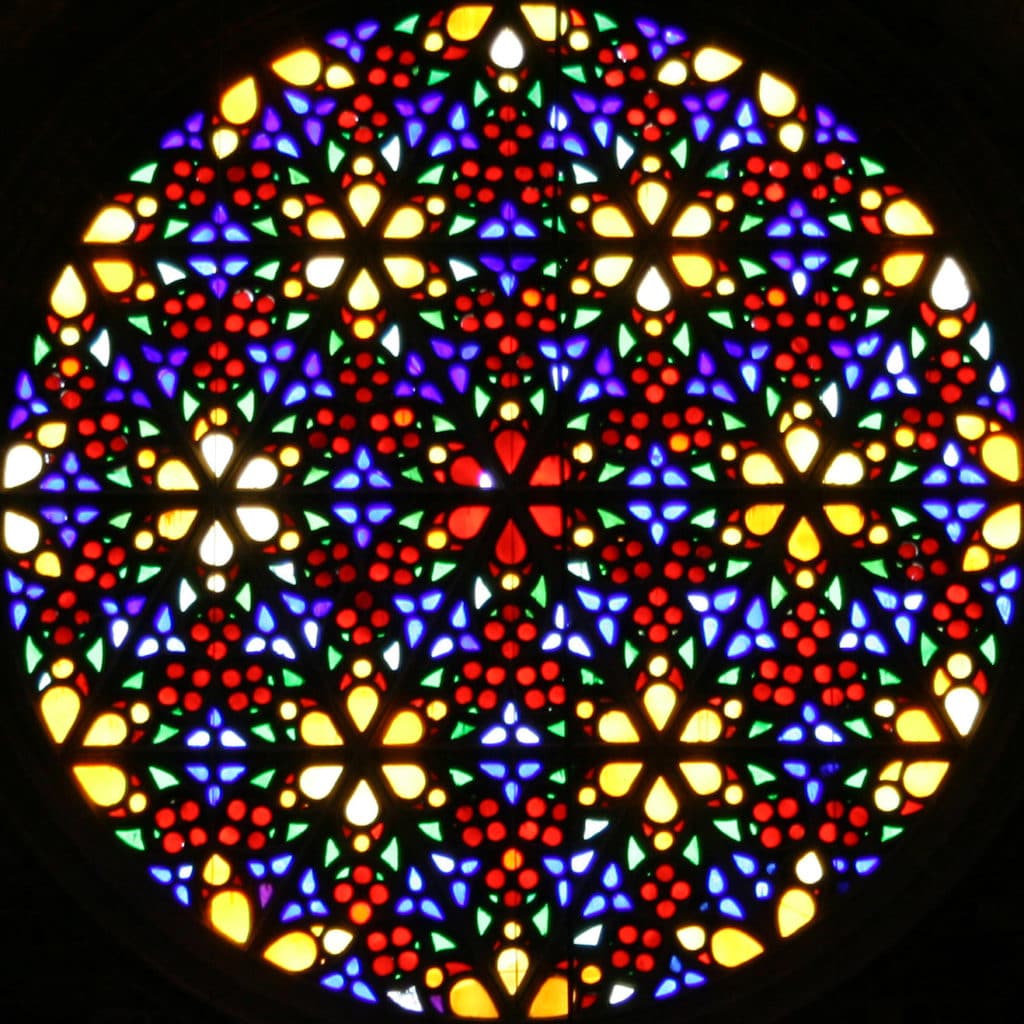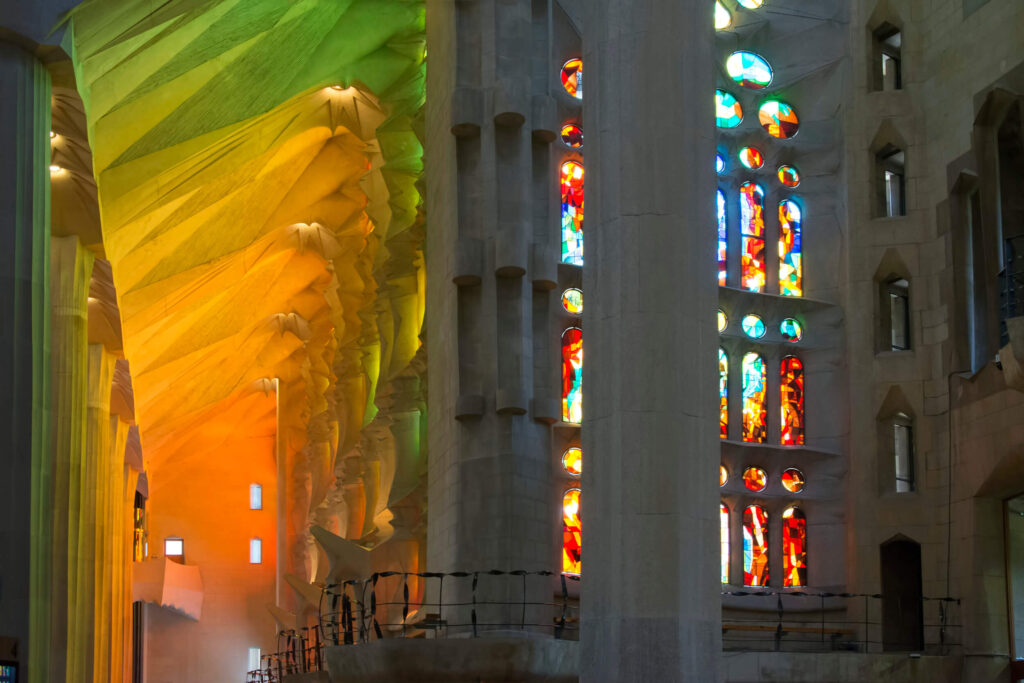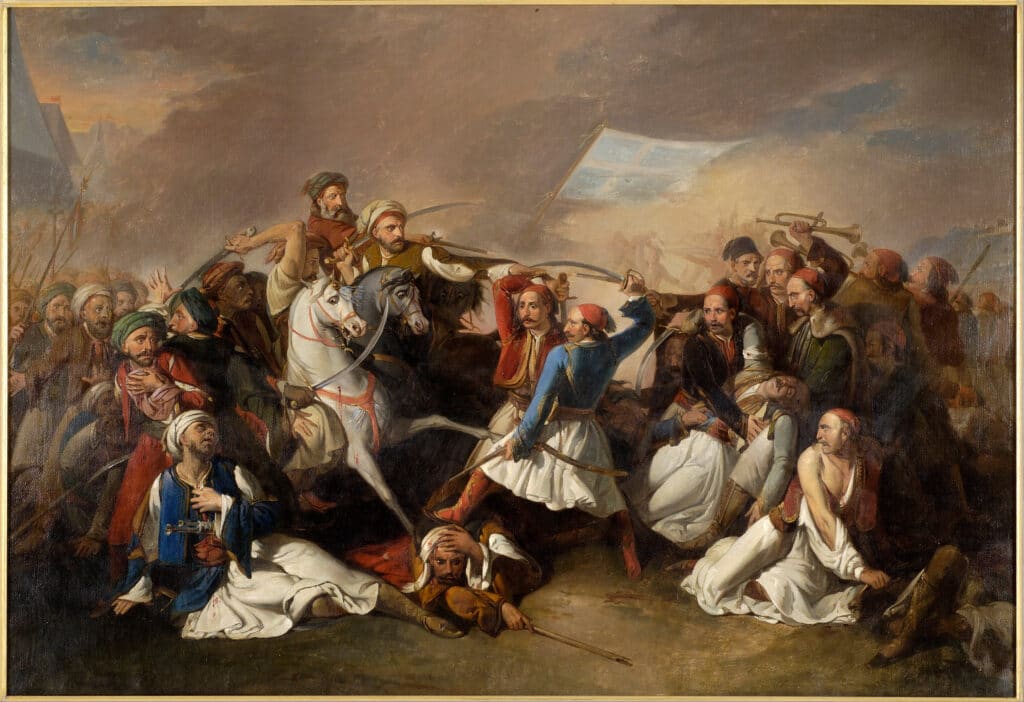
A Transcendental Education
We live in a world robbed of transcendence. A toxic mixture of materialism and utilitarianism, like polluted air robbed of life-giving oxygen, is the spiritually suffocating atmosphere we breathe every day. A loss of transcendence is even more evident in the ephemeral, transitory nature of so much of what passes for culture in our age. There is perhaps no symbol more apt for our time than the social media “feed,” which keeps our minds distracted by superficial novelty, crass images, half-baked thoughts, undigested opinions presented as facts, and aggressive grandstanding that shuts down rather than invites dialogue in the service of truth. It is a spectacle that passes before us, never to return. As Josh Gibbs points out in a recent interview, partaking of this “feed” is to eat ashes disguised as food, throwing precious hours of our life into a black hole.
A truly classical education, in stark contrast, is concerned with the Good, the True, and the Beautiful. Since the middle ages, these have been known as the “Transcendentals.” Their lineage goes back to Plato and his conception of the forms. Plato understood that material objects such as trees, ducks, honey bees, and so forth, do not explain themselves. He did not think in terms of linear, material, horizontal causation: that the seed causes the tree or the egg causes the duck. This would be to confuse temporal succession with causation. Rather, he thought of causation as a vertical event: across the whole life of an oak—the acorn and the fully grown tree producing its own acorns in turn—we witness the temporal unfolding of the tree’s immaterial form. Our own recognition of the tree as an oak is an inverted version of the same process. Seeing the oak with our eyes, we grasp its immaterial form, knowing the particular tree as a finite, material instance of an invisible, spiritual reality.
Rather opposite to our own assumptions, Plato thought that what is immaterial is in fact more real—more substantial, because less subject to the decay and change of the material world—than the apparently solid material stuff that we grasp through the senses. In the Republic, Plato presents us with the “divided line,” a simple framework for understanding all of reality. As we proceed from left to right along the line, we proceed from what is less real to what is more real, eventually reaching the source of all reality itself. At the extreme left of the line are images and likenesses of material things; one step closer to reality are material things themselves; one step closer takes us over the divide between visible and invisible into the realm of the immaterial, where some of the lesser forms live, such as those of geometry; proceeding one more step deeper into this reality, we arrive at the higher forms.
Movement to the right of the line is a movement toward greater reality: toward ever-greater generative power and at the same time toward ever-greater simplicity. This takes the form of a reduction in the etymological sense of “leading back to.” The form of the oak can be reduced to the form of the tree, the form of the tree to the form of the plant, the form of the plant to the form of living being, and so on. At each step in this reduction we are also asking “is this form its own end, or does it serve an end beyond itself?” The tree serves the end of producing fruit; the fruit serves the end of producing health; health serves the end of producing happiness. Happiness, classically speaking, is beatitude or blessedness: and it serves the Good, happiness being the effect of full communion with the Good in finite rational creatures. The Form of the Good stands at the extreme end of the divided line as both its source and telos.
Plato compares the Form of the Good to the sun, which by its light generates all life on earth. The Good has no end beyond itself, and yet it is present in everything that exists. The philosophers of the middle ages elaborated on this idea, proposing that Beauty and Truth are also forms of the same type, irreducible to some other purpose beyond themselves. When we are struck by the beauty in something—an innocent child, a field of wildflowers, a night sky resplendent with gleaming stars—we grasp what is most real in these passing phenomena. Eternity is present to us in those moments, because for that brief space we do not seek to use these things for a lesser purpose: to put it most profoundly (because most truly), we see things as God seems them, suffused with the divine light of their first creation. Because all things truly exist in God, all things as they truly are, are beautiful.
The fundamental claim Plato and his later followers make about the Transcendentals—the Good, the True, and the Beautiful—is that they form the ultimate horizon within which we play out the various activities of our lives. They are the light that illuminates the particular things and thoughts that pass by us each day, and most of us seek them unconsciously, in lesser, diluted forms: we seek to know the truth about our neighbor’s health, we gaze at the beauty of a film star on a billboard, or we pursue the good of physical health by visiting the gym. Even in sordid forms, more diluted still, they persist: the vengeful drug pusher wants to know the truth about the one who betrayed him to the police; the seducer pursues the beauty of his next victim; and the addict wrecks his life in following the goodness promised by the next drink.
Just as, by turning from the hibiscus flower illumined by the light of the sun, to the sun itself, we are overwhelmed by its power and radiance—just so, by turning our thought from the objects of our thought, will, and desire, to their ultimate sources, the Transcendentals, we are bewildered by the overwhelming light of God, who is the Good (Mark 10:18), the True (John 14:6), and the Beautiful (Psalm 96:6). Contemplating the truly Real, we become less attracted to illusory forms of goodness, truth, and beauty, knowing that finite objects of our thought, will, and desire must always serve ends beyond themselves: the self-subsisting Transcendentals.
An education that stands over against the materialism, utilitarianism, and ephemerality of our age, therefore, is one that consciously pursues the Transcendentals, those immaterial forms that are sources of all reality, shining eternally. This will be a Socratic education dissatisfied with partial, corrupted, and error-riddled thinking—because it is always seeking the truth through every byway of dialogue and dialectic. It will also be an aesthetic education in appreciating true beauty that goes beyond what is merely pleasing to the senses. And it will be a truly moral education—beyond mere rules and utilitarian ethical calculations—because turned to the source of all right action, the Form of the Good.
Author John Carr, after attending the Graduate Institute at St John’s College, taught humanities, Greek, and Latin for several years in classical schools. He recently left a homestead in the Green Mountains of Vermont to travel full-time with his family.
Note: Guest bloggers share their own thoughts as classical educators and learners and do not represent ClassicalU.com or Classical Academic Press. If you are interested in writing guest blog content, please contact us with your name, connection to classical education, and ideas for a blog post.








Responses